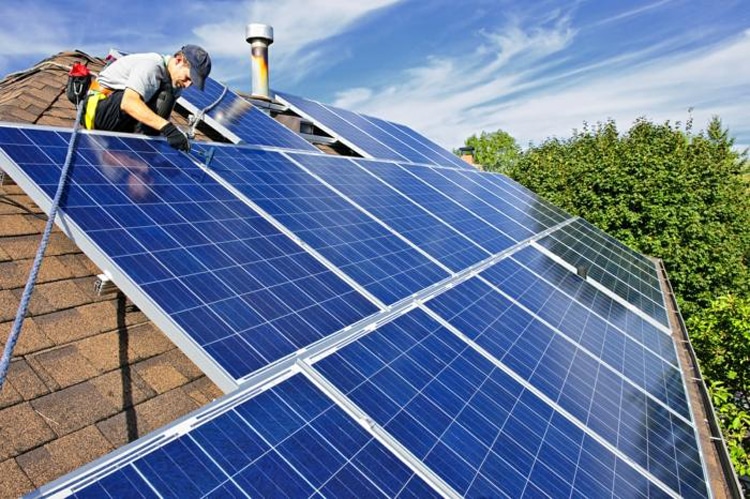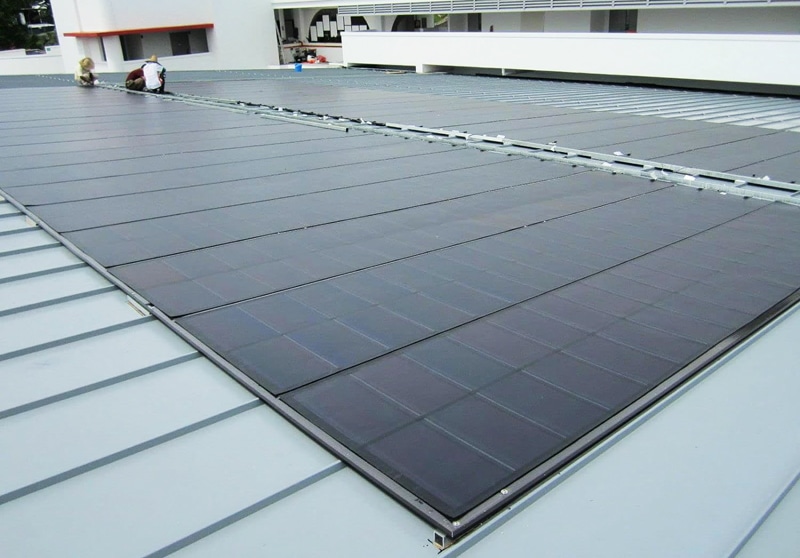How do solar panels work?
- 10/18/2023
Solar panels are devices that convert sunlight into electricity by using photovoltaic (PV) cells. PV cells are made of materials that generate electrons when exposed to light. The electrons flow through a circuit and produce direct current (DC) electricity, which can be used to power various devices or be stored in batteries.
When sunlight hits the solar panel, it is absorbed by the PV cells. The energy from the sunlight knocks electrons loose from their atoms, allowing them to flow through the material and generate electricity. This process is called the photovoltaic effect.
Solar panels are made up of many smaller units called photovoltaic cells. These cells are connected together and arranged in a grid-like pattern on the surface of the solar panel. When sunlight hits the cells, they generate electricity that can be used to power homes, businesses, and other devices.

There are three types of solar panels used by the solar industry today – monocrystalline panels, polycrystalline panels, and thin-film panels. While all three generate electricity, they do so in slightly different ways due to differences in their manufacturing process.
- Monocrystalline panels are made from a single pure silicon crystal. They have the highest efficiency, performance, and durability of all solar panels, but they are also the most expensive. They have a black or dark blue color and a uniform appearance.

- Polycrystalline panels are made from multiple silicon fragments that are melted together. They have lower efficiency, performance, and durability than monocrystalline panels, but they are also cheaper. They have a blue or light blue color and a speckled appearance.

- Thin-film panels are made from various materials that are deposited in thin layers on a substrate. They have the lowest efficiency, performance, and durability of all solar panels, but they are also the most flexible and lightweight. They have a black or brown color and a smooth appearance.

The type of solar panel that is best for your installation depends on your preferences, budget, roof space, and location. You can compare the costs, benefits, and drawbacks of each type of solar panel by using online tools or consulting with solar experts.
Flexible Solar Panels 200W
Models: JVBP-200M
1.High-Efficiency Mono-crystalline Cells
2.Ultra-Lightweight Design
3.Flexible Mounting Options
4.Sophisticated Integration with Smart Battery Systems
5.Easily Expandable
TOPCon Solar Panels 455W Double Glass Bifacial
Model: SS455M10
1.Power: 430W-455W
2.Size: 1762x1134x30mm
3.PV cells: TOPCon
4.TUV, UL, CEC, CE, INMETRO, RETIE, DEWA
5.Warranty: 30 years
SoloLite PVHub
Model: SP20A1600H
1.Capture Solar Energy
2.Intelligent Distribution
3.Simple Monitoring
4.Customization at Your Fingertips
5.Automatic Updates
Join the Solar Revolution with SHENZHEN SUNS ENERGY!
Join 80,000+ customers. Explore innovative solar solutions for a greener future. Act now for a brighter tomorrow!



